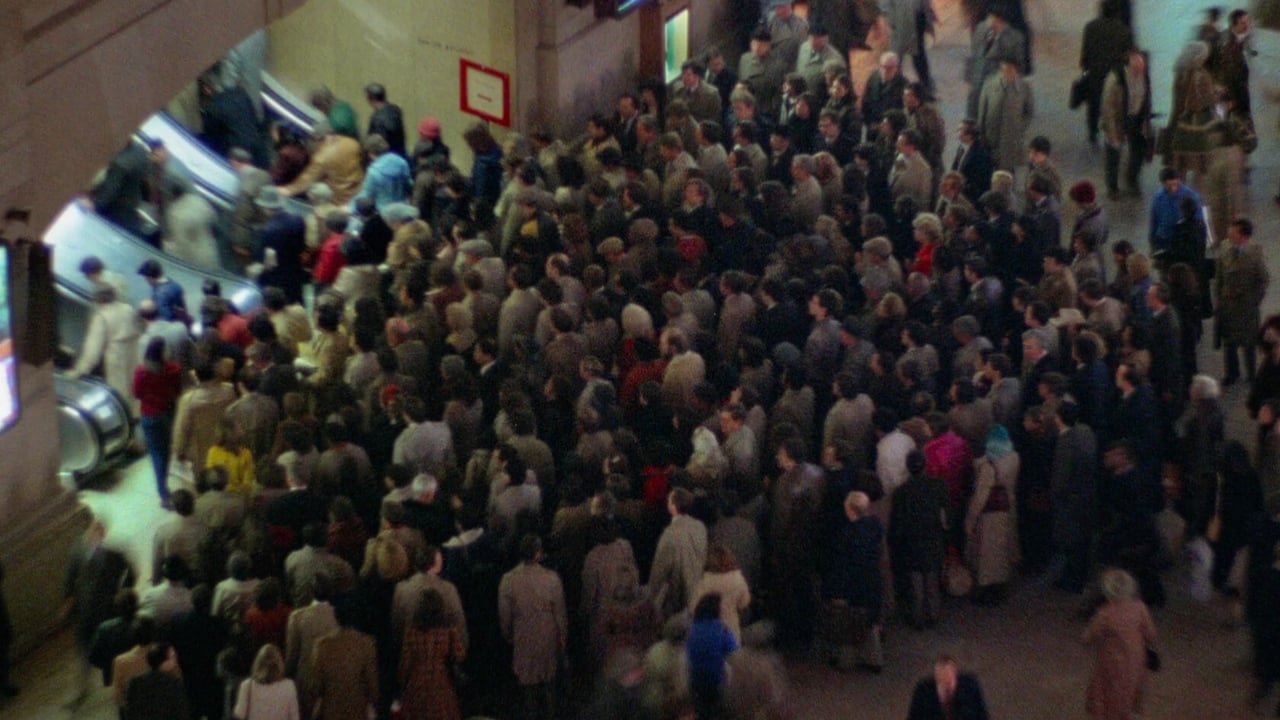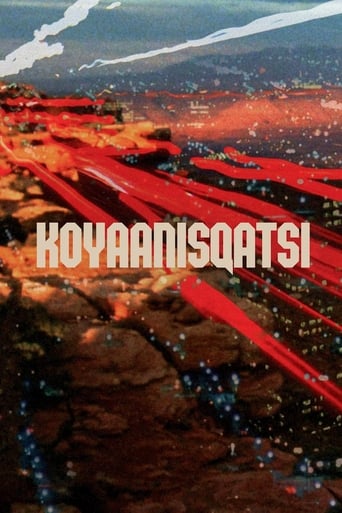

What makes it different from others?
... View MoreStylish but barely mediocre overall
... View MoreThe first must-see film of the year.
... View MoreBlistering performances.
... View MoreWhile it is not a movie to be enjoyed by everyone, or in all situations, Godfrey Reggio's "Koyaanisqati" is a unique, vast, and exhilarating experience. It has no direct narrative and has many different meanings depending on who you ask, and achieves this through brilliant scenery and long shots, as well as a spectacularly done soundtrack. The soundtrack, performed by the Philip Glass Ensemble, compliments the visuals in such a way that the film would feel incomplete and less meaningful without it. Its use of repetition, crescendos, and silence overwhelms the film with intensity and serenity. It stands out to me as one of Koyaanisqatsi's greatest highlights.It can take a certain mindset or amount of patience to appreciate the effect that Reggio sets out to achieve, which is not a complaint but something to take note of. It has its own style that defies what a majority of popular films possess, and by doing so it seems that the film has a message that could be conveyed in no other way; it is designed in a way where it can't necessarily be defined only by words. That, to me, is the true beauty of the film.Overall, Koyaanisqatsi is a fantastic experience that is, while not extremely accessible, quite moving and beautiful in a very particular way. It provides a unique experience and message that proves the film to be well done and worthwhile for anyone to watch.
... View MoreThanks to TCM, I watched Koyaanisqatsi again last night. I first saw this movie in an art house theater when I was in high school, and over the years I've seen it many times on home video. I've seen it in various states of mind and under the influence of many different mind-altering substances, but I've long since given up such pursuits and I was stone cold sober as I watched last night.I had forgotten just how visually powerful this movie is.I was touched emotionally every bit as much as back in 1983.I can't think of another film that could possibly have such a lasting emotional impact.
... View MoreKoyaanisqatsi is what you would get if took the filler shots from numerous documentaries and smashed them together accompanied by some music. And yeah, that's me being somewhat harsh, but it's not much better than that, really. There's artistic flair to it and it does explore certain themes, but it's still more of a mood piece than anything else.Plus I have a problem with the aforementioned themes. The word 'koyaanisqatsi' comes from Hopi language and literally means "chaotic life". Essentially life in turmoil, life out of balance. And while the film makers have said that everyone is free to view the film as they wish, it's pretty clear that their own intentions were to portray the downsides of modern society, of human existence in general. Except I didn't get that from the film. The first part of the film of generic nature landscapes is extremely boring and ordinary. It's only after humans start to show up, and we start to see time lapses of industry and technology, that things get interesting.And yeah, the movie shows us behaving like ants. Mindless masses passing through gates of steel and pillowing smoke. But, if we are ants, we are ants that will eventually populate the stars. We achieve, we build, we evolve ourselves. To me the whole movie is a message of triumph, of small people coming together to achieve something. And thus, as the intended message starts to become clearer near the end of the film, I was left feeling betrayed and baffled.Koyaanisqatsi is not for everyone. It's very slow, requires patience to sit through and you kind of have to agree with its message to get the full experience. Personally I didn't care for it, but I've talked with people that absolutely loved it. And even I can appreciate its flair and attempt, to some extent. Check it out if you're looking for something with a lot of edge.
... View MoreFrom the Hopi language, Koyaanisqatsi is a word that roughly translates as "crazy life," or "a life out of balance," or perhaps more appropriately, "a way of life that calls for another way of living." Incidentally, that's exactly what this film shows: no plot or story, just a document of the modern age of man, far out of balance from nature, which calls for human beings to adapt to their own constructs.This film doesn't offer any conventional story with any characters; it's purely an experience built from images and sound, to illicit thought and feeling in the viewers. Both the images and music are beautiful in their own ways: with Phillip Glass' epic, well-structured music score, the film takes on a palpable rhythm and mood that perfectly accentuates the gorgeous scenery. The film plays around a lot with time-lapse footage and slow-motion, which serve to show common cityscapes in an invoking new way. Altogether, the film is as hypnotic and mesmerizing as it is thought-provoking.This film was cobbled together from all kinds of footage filmed across the United States from 1975 to 1983, with a tight budget. Regardless, the filmmakers show superb prowess with their photography and editing skills. At least on a technical level, they've maximized their potential and tools to craft an audio/visual masterpiece, weaving the images and music to the themes implied with the term Koyaanisqatsi.As far as the content goes, like any piece of art, it's left to the viewer's interpretation. The most opaque of themes will revolve around civilization's progress, the depletion of nature, and the effects of technology and industrialization on the human race. There are times in the film where humanity seems triumphant, and other times where it feels like it's spinning out of control in a downward spiral of chaos and destruction (especially in one of the film's final shots, depicting an Atlas-Centaur rocket exploding; it's a sequence that's always hit me the hardest, given the combination of imagery, music, and the overall theme that human civilization rises so high, but will eventually crash and burn).Watching this film is not only a treat for the eyes and ears, but also a sobering, moving experience unlike any other. I believe it truly represents the best and worst of the human race in the modern age, and everybody should see it at least once in a lifetime.5/5 (Entertainment: Perfect | Content: Perfect | Film: Perfect)
... View More